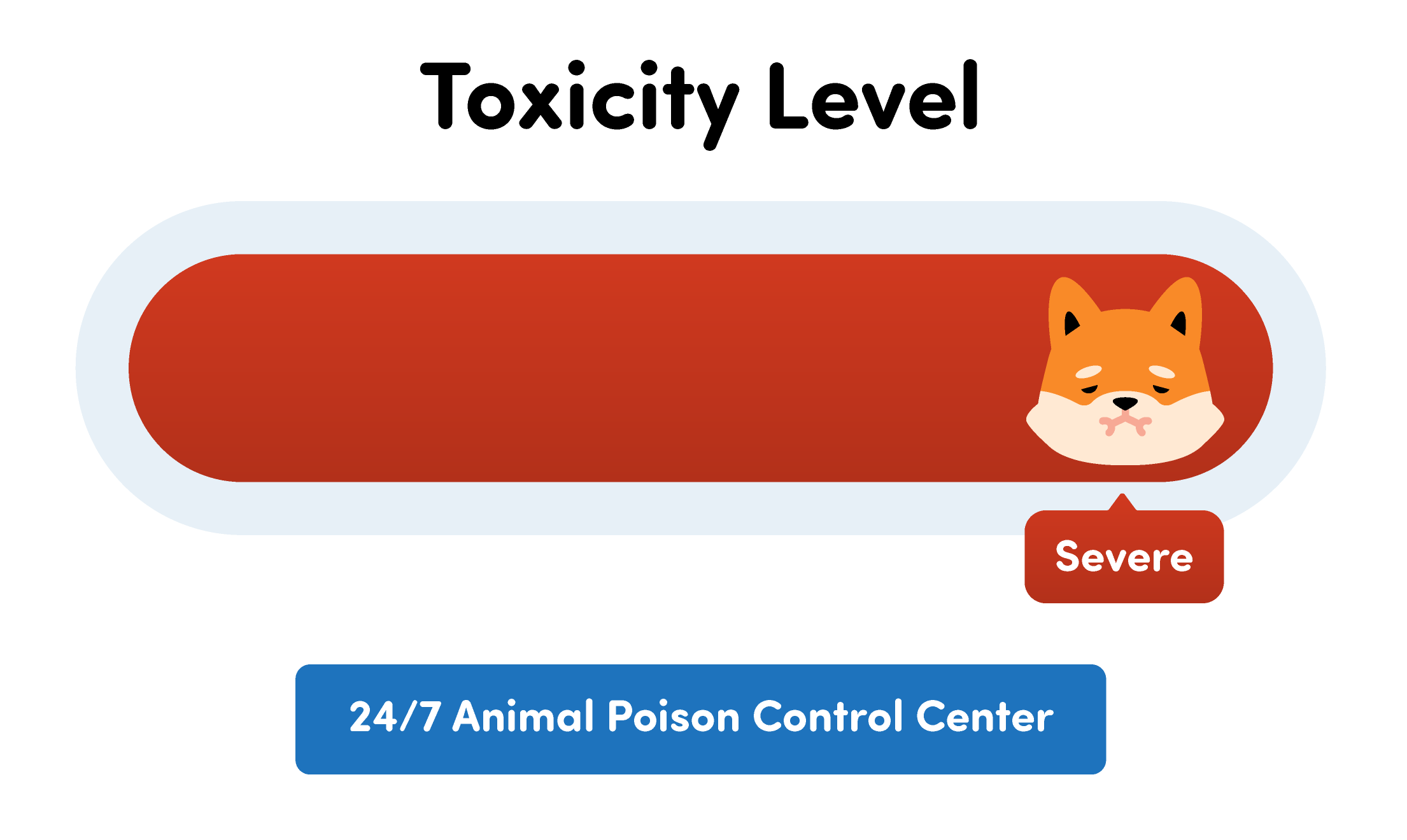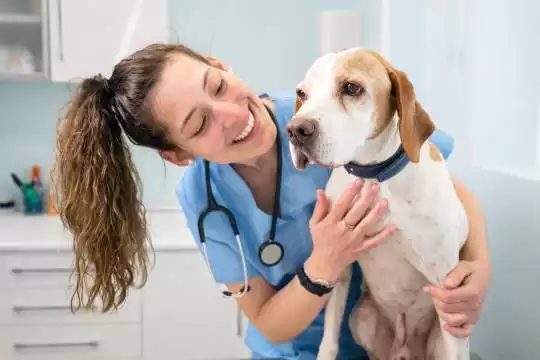Connect with a verified veterinarian in minutes. Licensed vets are available 24/7 to answer your questions. No need to worry about your furry family member.
Do you have beautiful azaleas in your yard? These shrubs are gorgeous in the spring, adding a pop of color wherever they’re planted. While these plants can be extremely pretty, they are also very dangerous to dogs.
If you have ever accidentally let your dog eat an azalea, you may have wondered why your dog was acting so strange after the incident. You may have been worried that something was wrong with your dog, and perhaps even taken him to the vet. So, what makes azaleas poisonous to dogs?
What are Azaleas?
Azaleas are cousins to rhododendrons. They’re a flowering shrub that has beautiful big flowers. Azaleas are most commonly found in the United States, but they are also grown in other parts of the world. Azaleas can be found in a variety of colors and have a beautiful texture. The flowers of an azalea plant can range from white to pink to red to purple, and the leaves of an azalea plant can range from green to blue-green to yellow-green. The types grown in the US include:
- Rhododendron occidentale: which are usually found in southern Oregon and northwestern California. They have very large flowers that may be white with a spot of yellow or are completely yellow.
- Rhododendron arborescens: are typically found from Alabama and Pennsylvania and grow wild. They have a sweet perfume, and the flowers are usually white or pale pink, sometimes with a yellow flare.
- Rhododendron calendulceum: also called the flame azalea, these are found in mountainous regions in the southeastern part of the US. These plants have bright yellow, orange, or red flowers, but no fragrance.
Unfortunately, these beautiful flowering plants are extremely poisonous to dogs. Even if your dog does not normally eat your plants, if it decides to gnaw on your azaleas for some bizarre reason, the possible resulting illness is devastating. The main reason they are highly toxic to dogs is because they contain a neurotoxin which is called grayanotoxin.
Grayantoxin is a powerful compound that can cause a dog, a horse, a cat, a goat, a sheep, and even you to become poisoned. This substance is found in the petals, leaves, nectar, and other parts of the plant, as well as the pollen.
When the toxin enters the body, it binds to the sodium channels in cell membranes, which disrupts the cells’ electrical current, which leads the cells to a state of permanent excitement.
It is not just the grayantoxin that makes the azalea bush dangerous for dogs, but also the variety of the plant. Azaleas come in around 250 different species.
As a rule of thumb, you should not purchase any Rhododendron varieties to add to your garden. If you are not sure about the variety of azalea you own, you should ask a professional to verify that you are not buying an azalea shrub that could cause accidental poisoning.
If you are going to plant some azaleas regardless, place them in an area where your dog cannot get to, or surround the area with something that will help your dog stay away from the plants.
If prevention measurements are too late and you know your fur baby has eaten any part of an azalea, then you’ll need to get him to the vet immediately. This could be a life-threatening medical emergency.
Signs Your Dog Experienced Azalea Poisoning
Azalea poisoning can be deadly, so you need to know if your dog has eaten any part of an azalea. According to ASPCA (American Society for the Prevention of Cruelty to Animals), you should look for any of the following clinical signs in your dog after a case of them eating azaleas or being exposed to azaleas:
- Abnormal or excessive drooling (hypersalivation)
- Severe vomiting
- Severe diarrhea
- Loss of appetite
- Muscle weakness
- Difficulty walking
- Abnormal heart rate or erratic heart rhythm (cardiac arrhythmia)
- Hypotension or low blood pressure
- Unusual sleepiness or lethargy
- Tremors or seizures
The flowers of azaleas are known to affect the cardiac system and the central nervous system. It also disrupts your pet’s gastrointestinal activities. In some pets, the skeletal functions of these animals can be disrupted. This happens during the periods of vomiting, along with a decrease in the heart rate and pressure of the blood, as well as symptoms of diarrhea.
This flower-bearing plant is mainly found in outdoor gardens. Pets who consume it usually immediately experience abdominal pains. It can affect the functioning of their heart and cause fatal nervous issues. Even just a slight nibble (at least 0.2% of their body weight) on the plants can lead to disastrous results.
In the most severe cases, they may even end up experiencing liver failure, a coma, or dying. So, any pet owners who recently saw their dogs eat or become poisoned by azaleas should contact their vet!

Review symptoms, medications & behavior to keep your pets healthy with a Vet Online in just minutes.
Ask a Vet Live NowTreatment of Azalea Poisoning in Dogs
Treatment depends on how long ago your dog at the plant, and whether or not he’s developed symptoms of poisoning. If your dog ate the azalea recently and isn’t showing symptoms, then the vet may choose to induce vomiting. They may also treat your dog with activated charcoal, which also works to prevent absorption of the toxin.
If a longer period has passed, then the vet may use other treatments such as a gastric lavage. This is done to remove the toxin from the dog’s stomach. In addition, your dog may require IV fluids to treat dehydration. The IV may also contain electrolytes, sugars, more depending on your dog’s symptoms.
In most cases, with prompt treatment, dogs completely recover. If your fur baby was anesthetized for a gastric lavage procedure, he may need to stay in the hospital one day or so for monitoring. The vet may ask that your bring your fur baby in for a checkup later to make sure the dog is recovering properly.
If you have a dog, or other pets, it’s best not to keep azalea bushes in your dog’s part of the yard. These plants are very toxic to dogs and also cats, so you may want to avoid these beautiful plants completely to keep your fur babies safe and healthy.
If you suspect that your dog has eaten your azalea plant, rush it to the veterinarian immediately. It is important that you do not let grayantoxin poisoning damage the your dog long term. It is also beneficial to bring a small portion of your azalea plant with you.
If your dog threw up some of the plant, that’s even better; make sure you take the thrown up piece of azalea with you. By seeing what your dog actually ate, you can help your veterinarian diagnose your dog and prepare a treatment plan for it.
Final Thoughts
In general, if you’re a dog owner who has a lot of houseplants or takes your pets to plant-filled spaces often, you should spare some time to do quick researches on whether or not it’s safe for your furry pets to be in close proximity to these greeneries.
There are many poisonous plants that may not be immediately noticeable to the eye, but can incite a lot of unwanted problems to your dog’s health.
Other toxic plants that are also commonly dangerous for furry beings include lily of the valleys, which are very rich in cardiac glycosides. Like azaleas, they can also cause severe arrhythmias and seizures. All of this is on top of the other gastrointestinal issues, such as vomiting and diarrhea.
Alongside lily of the valleys, you should always watch out for chrysanthemums, sago palms, tulips, yews, daffodils, castor beans, and oleanders.
Many of these plants are common around many yards, so if you have a large property, you should check for poisonous plants. A lot of them are also commonly found in outdoor landscaping and public places, so it is a good idea to always stay vigilant when you bring your pet dogs to new places with lots of greeneries.
Ingestion of any of these plants should lead immediately to you contacting a veterinarian of your choice. If you’re worried about wasting time, or if you don’t have a go-to veterinary for health issues such as this, you can also quickly phone your nearest Pet Poison Helpline, which can be reached at 1-855-764-7661.
A pet poison helpline will help you determine what the best course of action is for you and your pet. Aside from that, you can contact the ASPCA Poison Control at 1-888-426-4435. However, keep in mind that consult fees will likely apply to any of these calls.
Connect with a verified veterinarian in minutes. Licensed vets are available 24/7 to answer your questions. No need to worry about your furry family member.

Kim
Kim is a talented author, who loves animals especially dogs. She engaged in writing books and articles relating to animals a decade ago. Kim resides in Chicago with her husband and son. The family is the proud owner of a dog and a parrot (Jack and Lily). Kim wanted more than these two pets, but her husband put his foot down... She often visits elementary schools to talk to the kids about what she learned about pets and how they could learn from them.
Review symptoms, medications & behavior to keep your pets healthy with a Vet Online in just minutes.
Ask a Vet Live Now





